7 Most Beautiful Bazaars in Iran | Stunning Architecture and Culture
Iranian bazaars, bustling with vibrant colors and rich aromas, serve as timeless centers of trade, culture, and craftsmanship.
Iran is home to some of the world’s most dynamic and colorful bazaars, places that capture the heart of its culture. These markets have been integral to Iranian society for centuries, not only as centers of trade but also as spaces where people gather, share stories, and uphold traditions.
Iranian bazaars are architectural masterpieces that reflect the ingenuity and craftsmanship of their eras. Designed to inspire awe, they feature soaring domes, intricate tilework, and masterfully carved arches. These spaces aren’t just functional—they are vibrant canvases of Persian artistry and urban design.
This article celebrates the most beautiful bazaars in Iran, highlighting their unique architectural features, historical significance, and the enchanting atmosphere they offer visitors. From the lively Grand Bazaar of Tehran to the serene Kashan Bazaar, each marketplace tells its own story.
In these bazaars, visitors can find more than goods; they can experience the rhythm of local life, the rich scents of spices and perfumes, and the brilliance of traditional crafts. Whether you’re seeking handcrafted pottery, saffron, or exquisite Persian carpets, Iran’s bazaars offer something for everyone, set against a backdrop of artistic splendor and cultural depth.
Related Tour Packages:
Tehran Grand Bazaar & Sa’dabad Complex Tour
List of the Top 7 Most Beautiful Bazaars in Iran
- Grand Bazaar of Tehran
- Vakil Bazaar (Shiraz)
- Bazaar of Isfahan
- Tabriz Historic Bazaar Complex
- Kashan Bazaar
- Kerman Bazaar
- Qazvin Bazaar
The Role of Bazaars in Iranian History and Culture
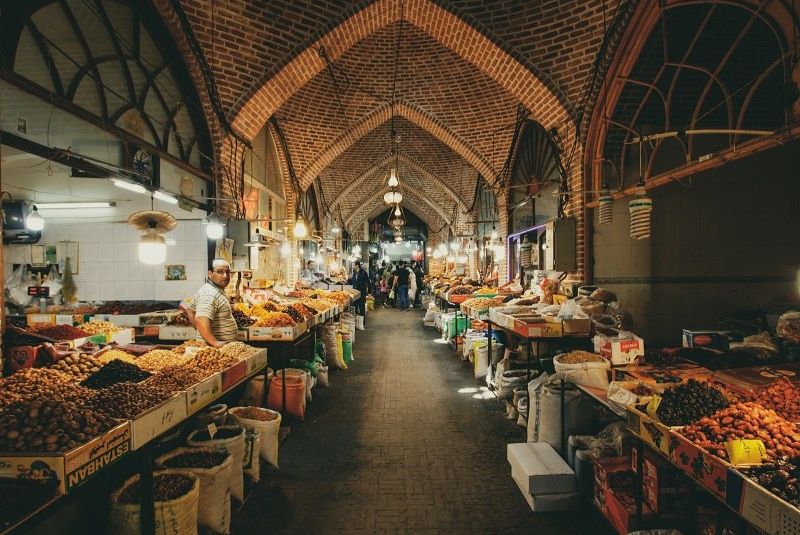
Bazaars in Iran have long been centers of life, offering more than commerce. As gathering points, they have historically connected distant regions, serving as crossroads for traders, travelers, and artisans. Beyond their economic role, bazaars were spaces for exchanging ideas, resolving disputes, and even influencing political events.
Persian architectural principles are deeply ingrained in the design of these markets. Bazars often feature covered walkways, creating shade and ventilation to suit Iran’s varying climates. High domed ceilings, brickwork, and intricate patterns not only add to their beauty but also ensure durability.
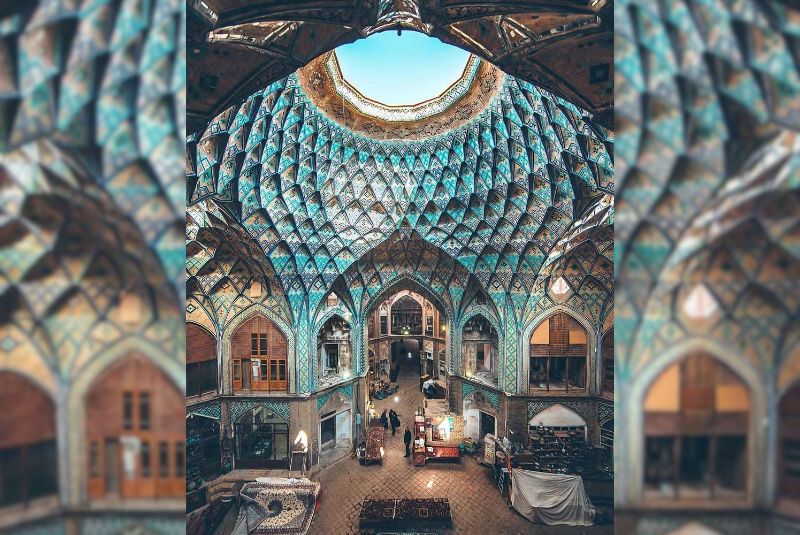
These markets were strategically integrated into the cities, typically surrounded by other vital institutions such as mosques, bathhouses, and caravanserais. This placement underscored their central role in community life, making them hubs of both trade and culture.
Today, Iran’s bazaars continue to function as living monuments, where history, art, and everyday life converge. Their vibrant atmosphere, combined with their unique architectural designs, makes them a must-visit for anyone wanting to understand the soul of the country.
Top 7 Most Beautiful Bazaars in Iran
Iran is renowned for its vibrant bazaars, each offering a unique window into the culture, craftsmanship, and daily life of the region it represents. Here’s a closer look at some of the most beautiful bazaars in Iran, each worth visiting for its distinct charm and offerings.
1. Grand Bazaar of Tehran
The Grand Bazaar of Tehran, located in the heart of the capital city, is one of the largest and most iconic markets in Iran. It has been a center of trade and commerce for over a thousand years and remains an integral part of Tehran’s cultural and social fabric.
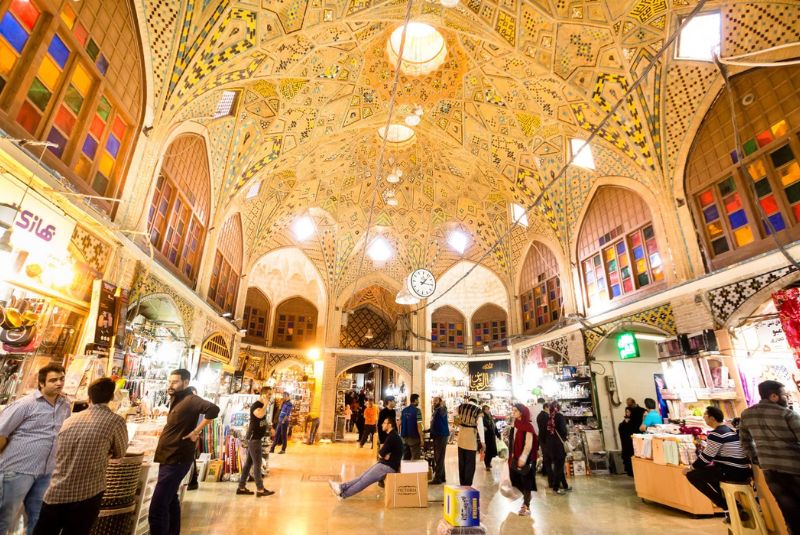
While parts of the bazaar date back to the Safavid era, its structure evolved significantly during the Qajar dynasty. The bazaar has served as a vital economic hub, connecting traders from across Iran and beyond.
The bazaar’s design is a labyrinth of interconnected halls, corridors, and domes. Its vaulted ceilings are adorned with intricate brick patterns, while tiled arches provide a sense of grandeur. Ingenious qanat systems, ancient underground waterways, provide natural cooling to the market, making it comfortable even in Tehran’s hot summers.
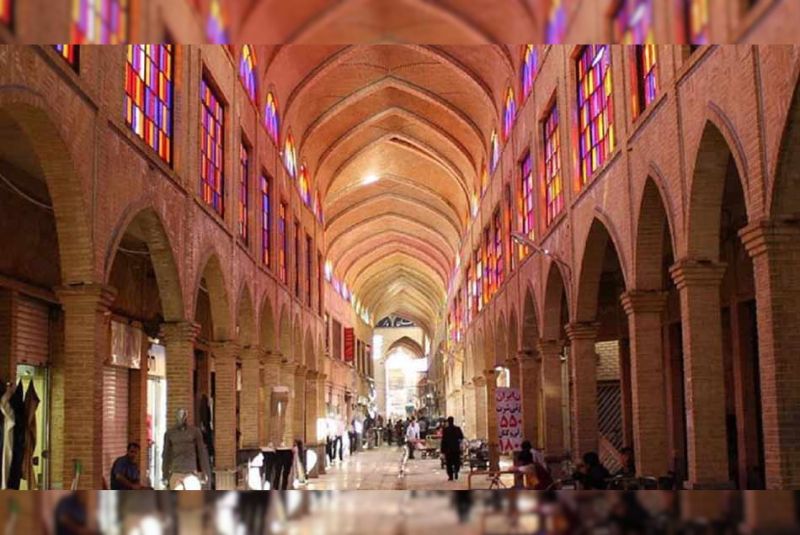
Bustling with activity, the Grand Bazaar is a sensory feast. The air is filled with the aroma of spices, the hum of bartering merchants, and the clinking of metalwork in artisan workshops. The bazaar offers a dynamic mix of the old and the new, as traditional craftsmanship meets modern commerce.

Visitors can browse an array of goods, including Persian rugs, fragrant spices like saffron and cinnamon, handcrafted copperware, and sparkling jewelry. Food enthusiasts will enjoy sampling traditional snacks and sweets sold in the bazaar’s many stalls.
2. Vakil Bazaar (Shiraz)
Situated in Shiraz, the city of poetry and gardens, Vakil Bazaar is a masterpiece of Zand-era architecture. Built during the reign of Karim Khan Zand in the 18th century, this bazaar reflects Shiraz’s artistic and cultural elegance.
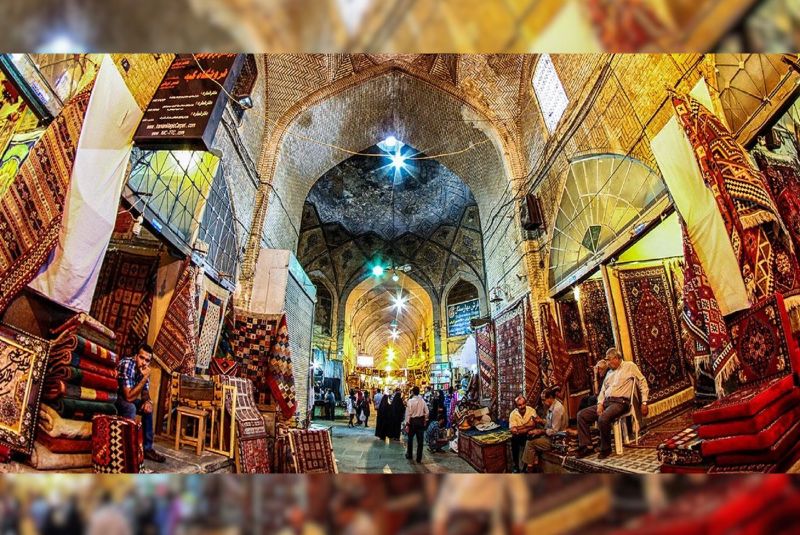
Vakil Bazaar was part of a larger urban development project under Karim Khan Zand, which included mosques and bathhouses. It was designed to facilitate trade while showcasing the artistic spirit of the Zand dynasty.
The bazaar is renowned for its wide, spacious corridors and arched ceilings made of brick. Geometric patterns on the ceilings and walls create a harmonious aesthetic. Natural light filters through openings in the ceilings, illuminating the intricacies of the architecture.
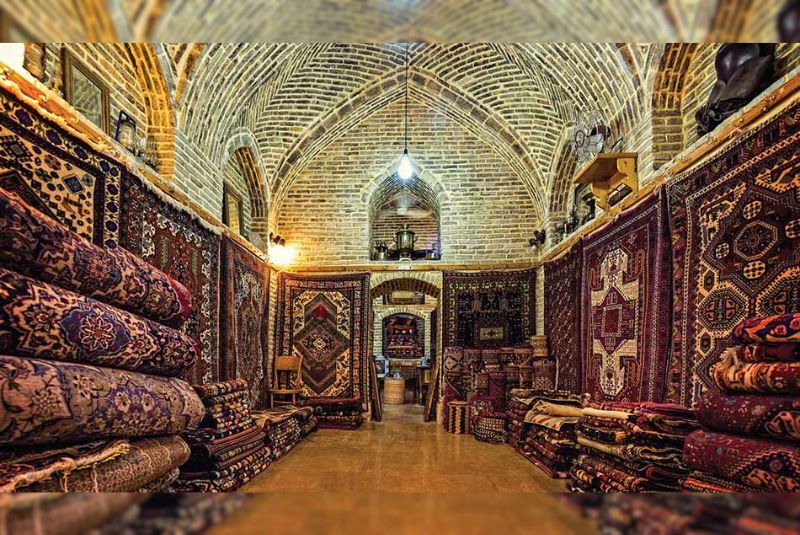
Vakil Bazaar exudes a serene and orderly charm. Unlike more crowded markets, its wide aisles offer a relaxed shopping experience. The mingling scents of spices, dried flowers, and rosewater create a tranquil ambiance.
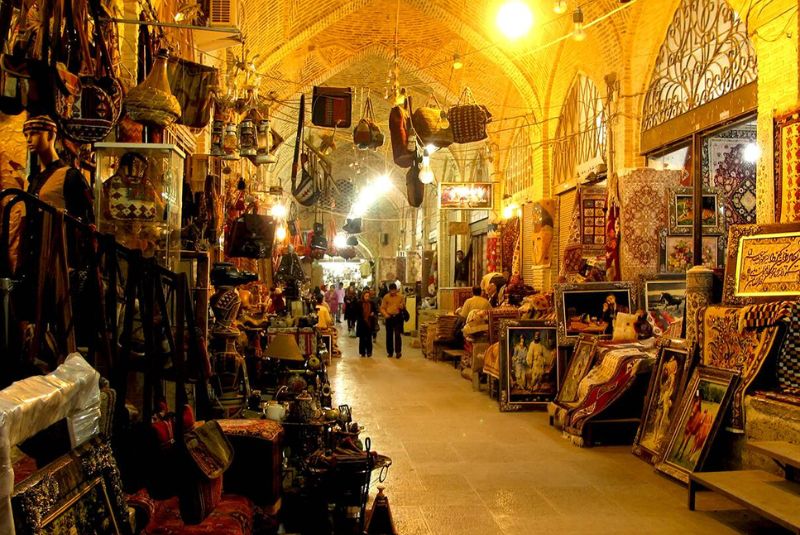
Popular items include handwoven Persian textiles, aromatic spices, and Shirazi rosewater, a product synonymous with the region. Visitors can also find locally crafted copper items and colorful glassware.
3. Bazaar of Isfahan
Situated near the magnificent Naqsh-e Jahan Square, the Bazaar of Isfahan is a jewel of Safavid-era architecture. It seamlessly blends commerce with artistry, offering visitors a glimpse into Iran’s golden age.
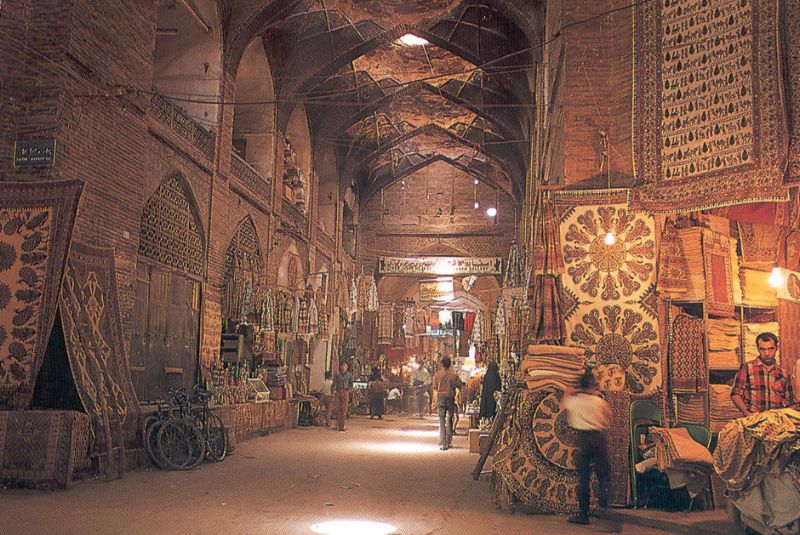
Dating back to the 17th century, this bazaar played a central role in the Safavid empire’s economy. Its proximity to Naqsh-e Jahan Square made it a focal point for cultural and economic activities.
The bazaar is celebrated for its ornate domes, tiled arches, and frescoes that depict scenes of Persian life and mythology. The delicate use of lattice windows allows sunlight to create intricate patterns on the floors, adding to the market’s visual allure.

A walk through the Bazaar of Isfahan feels like being surrounded by history. Artisans hammer away at copper and silver, and the vibrant colors of enameled crafts and textiles line the corridors. The atmosphere is lively yet steeped in a sense of artistic dignity.
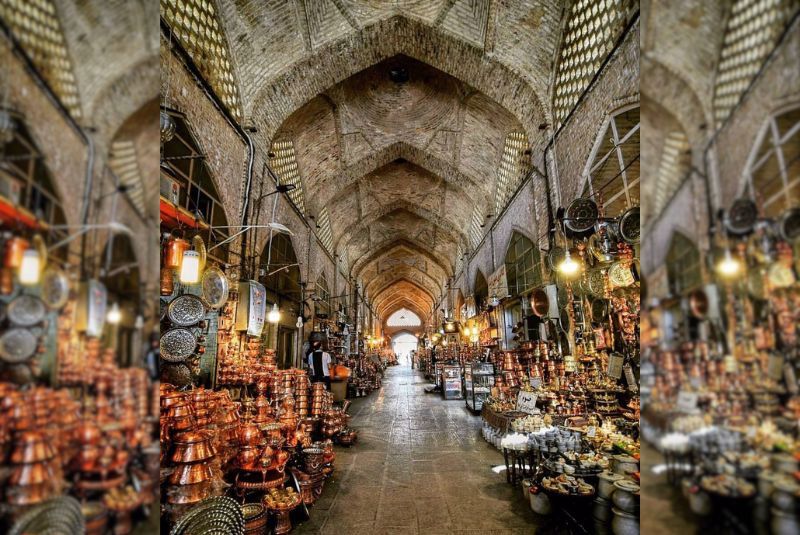
Shoppers can find enameled handicrafts, hand-painted miniatures, and traditional ceramics. The bazaar is also famous for its high-quality Persian carpets and textiles.
4. Tabriz Historic Bazaar Complex
A UNESCO World Heritage Site, the Tabriz Historic Bazaar Complex is one of the oldest and largest covered markets in the world. Its history, architecture, and scale make it a must-visit destination.

As a key stop along the Silk Road, the bazaar has been a hub of trade for over a millennium. It flourished during the Safavid dynasty, reflecting Tabriz’s importance as a cultural and economic center.
The bazaar’s red-brick domes and intricately designed corridors stretch over several kilometers. Its courtyards are masterpieces of symmetry, and the use of natural light enhances the beauty of its architecture.
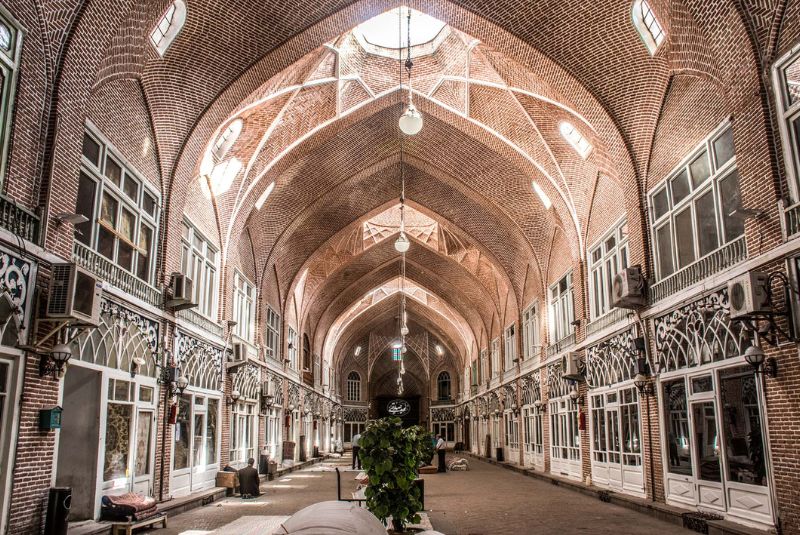
The bazaar has a timeless quality, with a balance between quiet dignity and bustling commerce. Each section of the market specializes in different goods, from carpets to spices, creating a sense of order and tradition.
Tabriz is renowned for its carpets, silk, and dried fruits. The bazaar also offers exquisite jewelry and handwoven textiles.
5. Kashan Bazaar
Though smaller in scale, the Kashan Bazaar is a gem of Persian architectural design. Its domes and skylights make it a photographer’s dream.
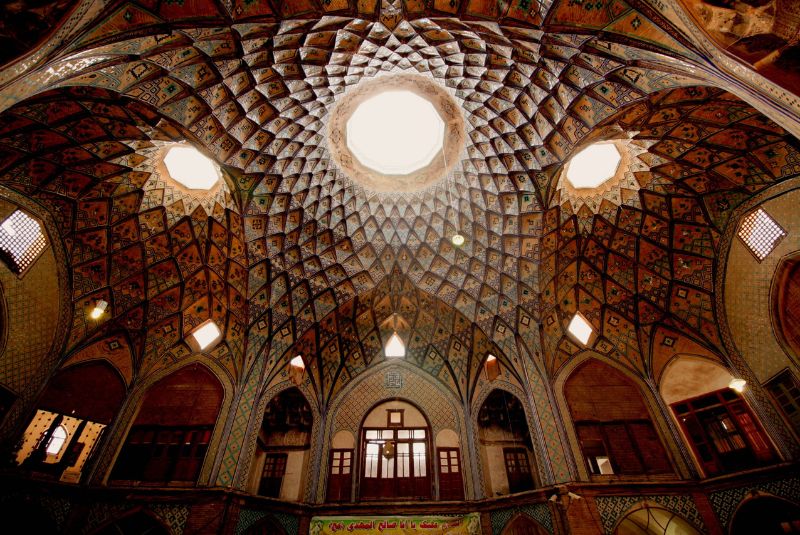
The bazaar’s origins date back to the Seljuk era, but much of its current design reflects Safavid influences. It has long been a hub for trade in rosewater and other local products.
The domes of Kashan Bazaar are particularly famous, with geometric skylights that create an interplay of light and shadow. The Timcheh-ye Amin od-Dowleh, a section of the bazaar, is a masterpiece of architectural symmetry.
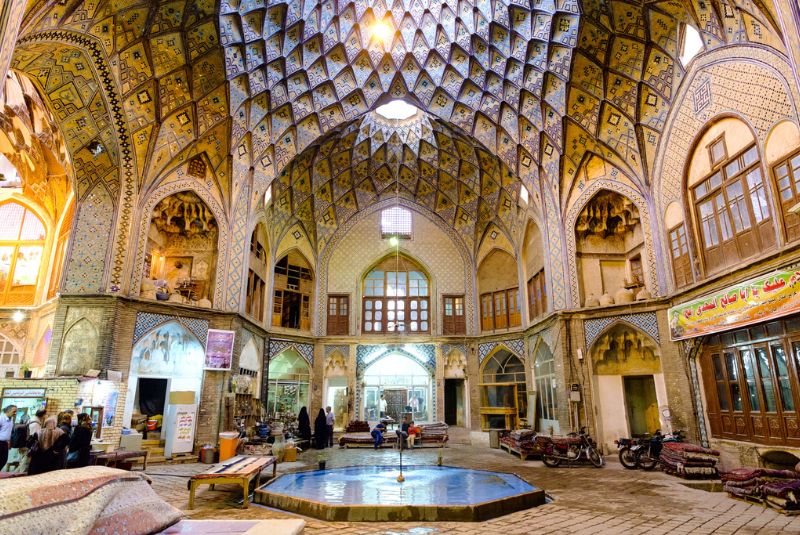
Kashan Bazaar is peaceful and intimate, offering a less crowded experience. Its serene environment makes it a perfect place to explore at leisure. Visitors can purchase rosewater, saffron, and pottery. The bazaar also offers locally made jewelry and decorative items.
6. Kerman Bazaar
Connected to the Ganjali Khan Complex, Kerman Bazaar is a treasure trove of Persian art and history.

Dating back to the Safavid era, this bazaar was part of the Ganjali Khan urban complex. Its historical significance is matched by its architectural beauty.
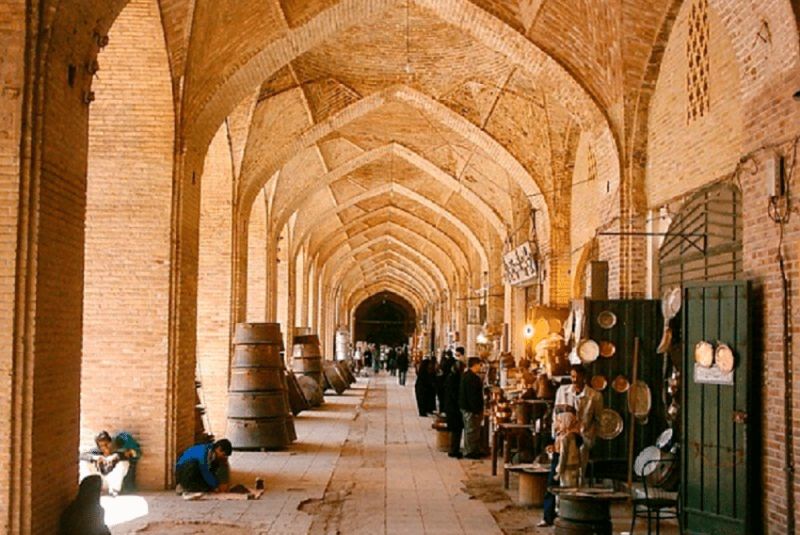
The bazaar’s frescoes, stucco decorations, and tilework are striking examples of Persian artistry. Its connection to the Ganjali Khan Bathhouse and Mosque makes it part of a larger historical setting.
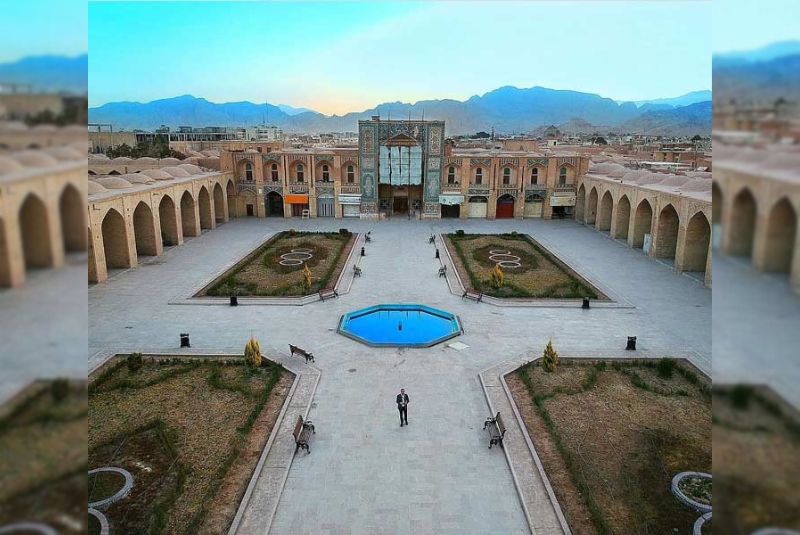
Kerman Bazaar is serene and inviting. The slower pace of life in Kerman adds to the bazaar’s charm, making it a relaxing place to explore. Popular goods include pashmina shawls, herbal teas, and traditional copper utensils.
7. Qazvin Bazaar
The Qazvin Bazaar may be smaller than others, but its architectural beauty and intimate atmosphere make it unforgettable. Dating back to the Safavid period, the bazaar played an important role in Qazvin’s history as a trade and administrative center.
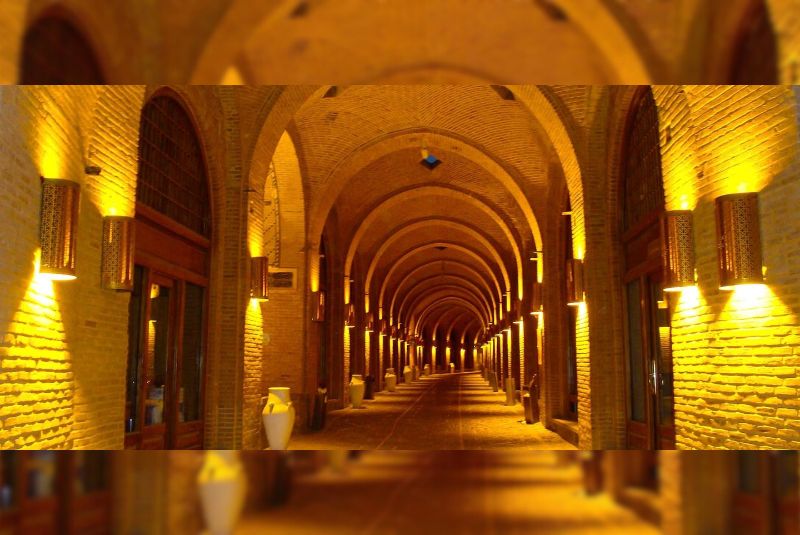
Its brick courtyards and arched corridors are elegant and inviting. The blend of light and shadow adds a unique aesthetic appeal.
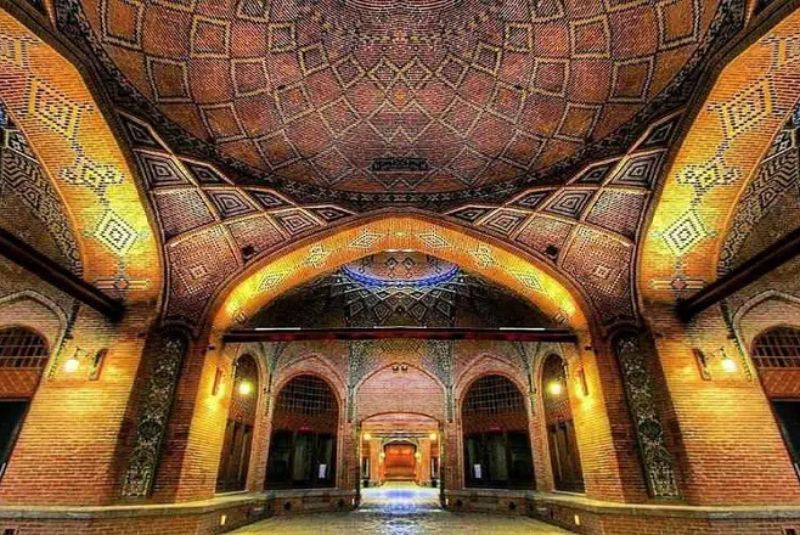
This bazaar feels personal and welcoming. The slower pace allows visitors to appreciate its design and interact with friendly merchants.

The bazaar offers local delicacies, ceramics, and dried fruits, reflecting the region’s culinary and artistic traditions.
What Makes Iranian Bazaars Unique?
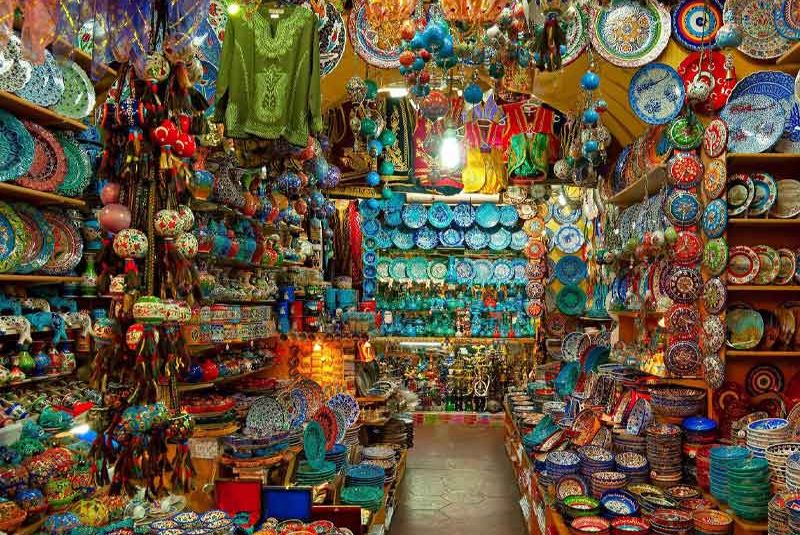
Iranian bazaars are extraordinary not just for their variety of goods but for their stunning architecture and lively atmosphere. These markets are as much about experiencing beauty as they are about shopping.
One of the most striking features of Iranian bazaars is their architectural design. Domes, arches, and mosaic tiles dominate the landscape, creating spaces that are both functional and visually captivating. The domes often feature geometric designs and floral patterns, while the arches add a sense of grandeur to the corridors. Mosaic tiles, with their vibrant colors and intricate motifs, decorate walls, ceilings, and entrances, turning each corner into a piece of art.
Natural light and ventilation play a significant role in the design. Skylights and openings in the domes allow sunlight to filter through, casting beautiful patterns on the floors. These features also help regulate temperature, making the bazaars comfortable year-round.
A visit to these bazaars is a sensory delight. The sights of colorful textiles, spices, and handicrafts are matched by the sounds of merchants calling out their wares and the hum of lively conversations. The smells of saffron, dried herbs, and freshly baked bread make the experience unforgettable.
Artisans and craftsmen are integral to the charm of Iranian bazaars. Many stalls are run by families who have honed their skills over generations. From handwoven fabrics to intricate metalwork, the bazaars are a showcase of traditional Persian art, ensuring these crafts continue to thrive in the modern world.
Practical Tips for Visiting Bazaars in Iran

Visiting Iranian bazaars is an enriching experience, but knowing a few practical tips can help you make the most of it.
- Best Times to Visit: Plan your visit during the morning or late afternoon to avoid the busiest hours. Early mornings are perfect for exploring at a leisurely pace, while evenings bring a lively energy as locals shop after work.
- Etiquette Tips: Iranian vendors are usually friendly and welcoming. A polite greeting, such as "Salam," goes a long way. Take your time browsing, and don’t feel pressured to buy unless you’re ready.
- Bargaining: Haggling is common and even expected in bazaars, but it should be done with respect and a smile. Start by offering a lower price, and enjoy the back-and-forth negotiation—it’s part of the experience!
- Currency: Carry Iranian Rials/ Tomans in cash, as many vendors don’t accept credit cards. Small bills are particularly useful for bargaining and quick transactions.
Final Takeaway
Iran’s bazaars are some of the most vibrant and beautiful places to explore. Each one tells a story through its incredible architecture, lively atmosphere, and the unique items you can find there. From the intricate domes and colorful tiles to the scents of spices and handmade crafts, these markets are truly unforgettable.
The most beautiful bazaars in Iran—like those in Tehran, Shiraz, Isfahan, and Tabriz—are not just places to shop but also wonderful spots to experience Persian culture and tradition.
Have you visited one of these bazaars, or are they on your travel list? Let us know in the comments—we’d love to hear your stories and thoughts!
Share your story!
Comment below and let us know about your Experience.
Your story inspires others!


Comment
Leave a Comment